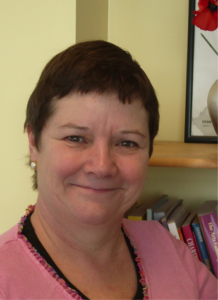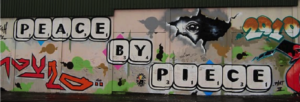By Avila Kilmurray

A recent study of community activism in Northern Ireland highlights resilience as a key outcome of the contribution of community action during times of both violence and tentative peacebuilding.
In situations of protracted conflict, where abnormality becomes the norm, community-based organisation can create the necessary space for activists to articulate concerns and priorities, as well as to test alternatives to the continuing spiral of injury and mayhem. Grounded community action also offers links with key combatant parties that can build the relationships necessary for the transition to peaceful political dialogue.
The shattering of Northern Ireland into aligned single identity communities (Protestant/Unionist/Loyalist and Catholic/Nationalist/Republican) from the early years of ‘the Troubles’, gave rise to conflicting narratives that offered mutually exclusive explanations of the conflict. Community action, however, allowed the maintenance of individual connections, on an inter-community basis – standing peacebuilding in good stead.
Northern Ireland peace walls and community voices
 Faced with the largescale population movement, caused by intimidation and fear, much early community activism developed given stark necessity. Families had to be housed and human rights abuses documented; the bereaved supported as they buried their dead. With the passage of time it became clear that there was a need for a local voice on pressing social and economic issues, resulting in early inter-community contacts identifying areas of common interest.
Faced with the largescale population movement, caused by intimidation and fear, much early community activism developed given stark necessity. Families had to be housed and human rights abuses documented; the bereaved supported as they buried their dead. With the passage of time it became clear that there was a need for a local voice on pressing social and economic issues, resulting in early inter-community contacts identifying areas of common interest.Community voices were raised on either side of the growing number of ‘peace walls’, but also around and across them. Women’s groups were particularly inventive in seeking out points of connection and meeting on a regular basis.
The early 1990’s saw strategies put in place to create inclusive space. The Opsahl Commission was set up, as an international panel, to receive evidence from anyone who wished to make a recommendation on the future of Northern Ireland. This included parties such as Sinn Féin that had been previously excluded from official media coverage by government decree. The importance of inclusivity was emphasised.
Building confidence between Loyalists and Republicans
Some years before the 1994 Republican and Loyalist ceasefires, community-based initiatives were designed to promote confidence building. A number of these were symbolic, such as when Irish President, Mary Robinson, met and shook hands with Sinn Féin’s Gerry Adams, at a community-badged gathering in West Belfast. It was important to indicate that tentative political movement would be duly recognised.
The design of the neighbouring Springfield Inter-Community Development Project was implemented with an eye to confidence-building. Putting in place a Management Committee composed of individuals from across the contentious ‘peaceline’, the organisation employed a recently released Loyalist prisoner to work with a Republican ex-prisoner. Both individuals could keep their respective political constituencies appraised how ‘the other’ saw developments, allowing a supportive framing for the on-going back channel negotiations that were being conducted by the Irish Republican Army (IRA) and the Ulster Volunteer Force (UVF), mediated by a local priest. Contact and networking at local community level was always politically deniable.
Testing alternatives to violence
An important initiative to create alternatives to the punishment shootings meted out by both Republican and Loyalist paramilitaries to young people accused of ‘anti-social activities’ was established. In communities where policing was fraught, a community-based restorative justice programme was developed in the years immediately following the ceasefires. A small number of individuals sat down with those who were inflicting kneecappings and beatings, arguing that there had to be an alternative to what was essentially a form of torture. Through discussion, challenge, and application of a human rights lens, the alternative of non-violent restorative justice projects was agreed by those involved. State agencies were not overly happy with this community-driven approach, although it was later lauded by the Criminal Justice Inspectorate.
Conscious of the impact of the violence that all too often surrounded contentious traditional marches in the North, as well as the interfaces, the North Belfast Community Development Centre, found itself at the eye of the storm in the mid 1990’s and pioneered the Mobile Phone Network. Community activists on either side of peace walls were supplied with mobile phones and networked so that they could contact each other to check out rumours and allegations of sectarian attacks. Relationships were built over time that allowed direct negotiation to alleviate violence at potential flashpoints.
Community initiatives also sounded out, and put in place, the relationships necessary to deliver on difficult peacebuilding decisions. Prior to Sinn Féin acceptance of the new policing arrangements, Interaction Belfast, working with South African mediator, Brian Currin, designed facilitated meetings that involved Republican and Loyalist ex-combatants, in discussion with PSNI (Police Service of Northern Ireland) officers. This comprehensive and confidential process served to smooth the path of political transition that was involved in Republican acceptance of policing.
Community contributions to peace – success factors
A number of factors underpinned the effectiveness of the community contribution to peacebuilding:
- The facilitative role of individuals with credibility: often termed ‘insider-outsiders’ whose credibility came from their own prior paramilitary/ prisoner/ political involvement.
- The importance of moving at a pace suitable to the context of the politics of the time and community aspiration, while still being prepared to challenge people to shift out of accustomed comfort zones.
- The sensitivity required to be conscious of the impact of words and symbols used that can affect community receptivity to peacebuilding programmes.
- The ability to disrupt accepted stereotypes by highlighting the niches of common interest, both in terms of issues and a shared humanity that encompasses the pain of loss and hurt.
Then there is the need to walk new pathways giving people the opportunity to change without demanding rejection of what has either gone, or been done, before. Peacebuilding is not penitential; it is about opening up possibilities. For community activists, this requires integrity and quiet diplomacy, allied to a ‘street wise’ sixth sense. Although the new normal in Northern Ireland is considerably better than that of the past, there are still a plethora of challenges that makes the honing of that sixth sense vitally important.
This post first appeared on the Conciliation Resources website in April 2017.
Avila Kilmurray is a Conciliation Resouces trustee and was Director of the Community Foundation for Northern Ireland from 1994 until 2015. She has long been active in the Women’s Movement and was a founder member of the Northern Ireland Women’s Coalition. Her new book Community Action in a Contested Society: The Story of Northern Ireland (2017) is available now from Peter Lang Publishers.